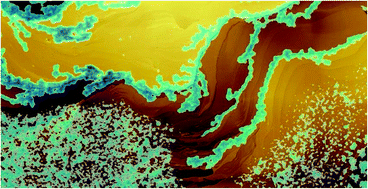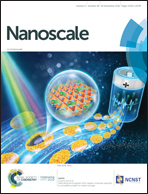How nanoscale surface steps promote ice growth on feldspar: microscopy observation of morphology-enhanced condensation and freezing†
Abstract
Ice in the atmosphere affects Earth's radiative properties and initiates most precipitation. Growing ice often requires a solid surface, either to catalyze freezing of supercooled cloud droplets or to serve as a substrate for ice deposited from water vapor. There is evidence that this surface is typically provided by airborne mineral dust; but how chemistry, structure and morphology interrelate to determine the ice-nucleating ability of mineral surfaces remains elusive. Here, we combine optical microscopy with atomic force microscopy to explore the mechanisms of initial ice growth on alkali feldspar, a mineral proposed to dominate ice nucleation in Earth's atmosphere. When cold air becomes supersaturated with respect to water, we discovered that ice rapidly spreads along steps of a feldspar surface. By measuring how ice propagation depends on surface-step height we establish a scenario where supercooled liquid water condenses at steps without having to overcome a nucleation barrier, and subsequently freezes quickly. Our results imply that steps, which are common even on macroscopically flat feldspar surfaces, can accelerate water condensation followed by freezing, thus promoting glaciation and dehydration of mixed-phase clouds.



 Please wait while we load your content...
Please wait while we load your content...
